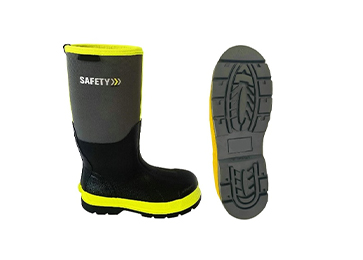The Essential Guide to Rubber Working Boots
When it comes to working in environments that involve water, mud, or various hazardous materials, rubber working boots are an absolute necessity. These boots are designed to provide protection, comfort, and durability, making them ideal for a wide range of professions, from agriculture to construction.
Why Choose Rubber Working Boots?
Rubber working boots offer a plethora of benefits. First and foremost, their waterproof nature ensures that your feet remain dry in wet conditions. For individuals who work in farming, fishing, or any job that requires frequent exposure to water, staying dry is crucial for both comfort and health. Wet feet can lead to blisters and fungal infections, which can hinder productivity and well-being.
Another significant advantage of rubber boots is their ease of cleaning. Unlike leather or fabric boots, which can absorb dirt and moisture, rubber can simply be hosed off or wiped clean. This feature is especially important in industries such as agriculture, where mud, manure, and other contaminants are common.
Comfort and Fit
While functionality is paramount, comfort is equally essential for those who spend long hours on their feet. Many modern rubber working boots are now designed with ergonomic features such as cushioned insoles and arch support. These attributes help reduce fatigue and provide the necessary support during long workdays. Additionally, finding the right fit is crucial—too loose, and you risk slipping; too tight, and you can cause discomfort.
It's also worth considering the height of the boot. Rubber working boots come in various heights, from ankle to knee-high. The right height depends on the specific tasks you engage in. For instance, if you're wading through deep water or muddy fields, knee-high boots are more appropriate, while ankle boots might suffice for lighter tasks.
rubber working boots

Durability and Material Quality
Quality matters when choosing rubber working boots. High-grade rubber can withstand harsh weather conditions and resist punctures and abrasions. Look for boots that feature reinforced toes and thick, slip-resistant outsoles, which contribute to both durability and safety in slippery environments.
Additionally, some rubber boots are treated with chemicals that resist ozone and UV rays, extending their lifespan even further. Investing in a quality pair may come at a higher initial cost, but the long-term benefits often outweigh the expense.
Maintaining Your Rubber Boots
To ensure the longevity of your rubber working boots, regular maintenance is key. After each use, rinse off any dirt and debris, and allow the boots to dry thoroughly before storing them. This practice helps prevent the degradation of the rubber and keeps your boots in good condition.
Conclusion
In summary, rubber working boots are indispensable for anyone whose job involves exposure to water, mud, or hazardous materials. They provide essential protection, comfort, and ease of cleaning, making them a practical choice for a wide range of professions. When selecting a pair, consider the fit, height, and material quality to ensure you choose the best option for your work environment. With the right pair of rubber working boots, you can stay dry, comfortable, and safe while tackling any job.
-
Stay Dry in Any Condition with WadersNewsJul.17,2025
-
Elite Performance with Camouflage Combat BootsNewsJul.17,2025
-
Dry and Comfortable with Green Rubber Garden ShoesNewsJul.17,2025
-
Convenient Protection with Foldable RainbootsNewsJul.17,2025
-
Comfort and Protection with Neoprene Work BootsNewsJul.17,2025
-
Brighten Rainy Days with Floral Rain BootsNewsJul.17,2025
-
Safety Wellies: The Ultimate Combination of Protection, Comfort, and VisibilityNewsJun.19,2025











